The Manhattan Project
The Manhattan Project was a research and development project that produced the first atomic bombs during the Second World War. It was led by the United States, with the support of the United Kingdom and Canada.
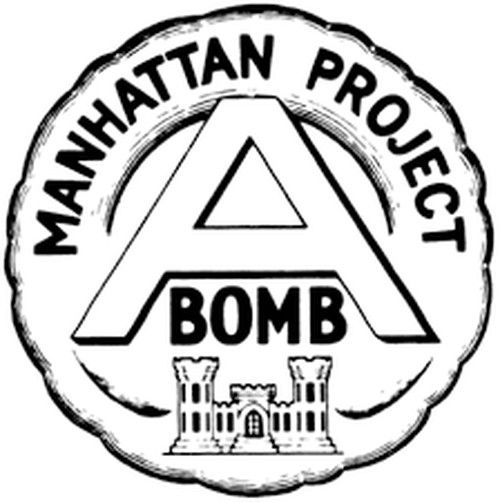
Two types of atomic bombs were developed during the war: a relatively simple type of fissure weapon, the Little Boy, was created using uranium-235. Parallel to this work with uranium, there were also efforts to produce plutonium, creating the implosion-type weapon, Fat Man.
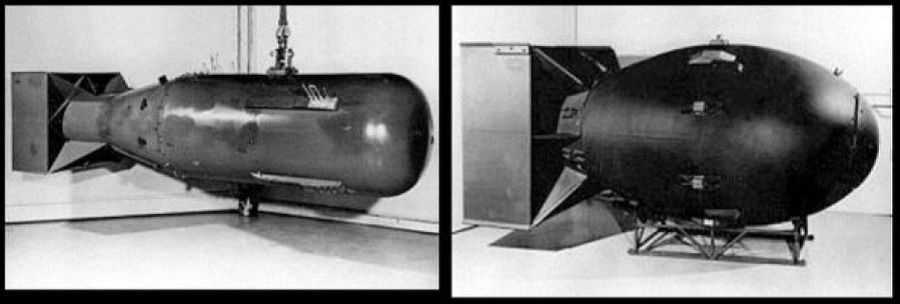
Little Boy and Fat Man were used in the bombings of Hiroshima and Nagasaki, respectively. The game references these bombs in the bomb cards Tom Boy and Fat Chance, respectively.
Game Data
The Manhattan Project is a game played with 2 to 5 players, recommended for ages 13 and up, by Brandon Tibbetts, the designer. Viktor Csete, Clay Gardner and Sergi Marcet were responsible for the artwork - and how beautiful it turned out! Amazing work.
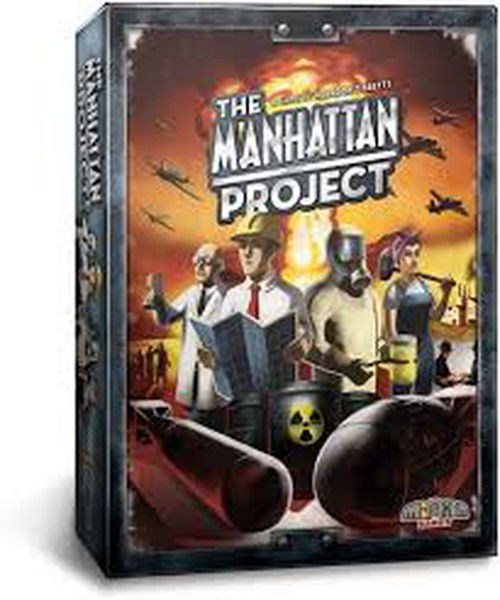
The Manhattan Project was released in 2012 by Minion Games. In this game, you'll be placing workers down to do their job, close purchasing, racing other players, and also disrupting them too. An important note is: this game is totally independent of its language.
The Game
The Manhattan Project isn't what we can describe as a politically correct game, as it was based on a part of history that, even though sad, shows us past mistakes that we can't repeat in the future.
This game can adapt what went on during The Manhattan Project really well, including the search for an efficient way to mine yellowcake, the need for scientists, engineers and workers to create the bomb as fast as possible.

Obviously that, as this is a competitive board game, we need to be careful with opponents' air strikes, spies, once or twice counter-attack, test our plutonium bombs, carry bombs in bombers, etc. Regardless, everything that was involved in The Manhattan Project is well-represented in this game.
The game's main board brings almost all the spaces we will use to place down our workers. I say "almost" because we have an individual board in which we can put our workers too.
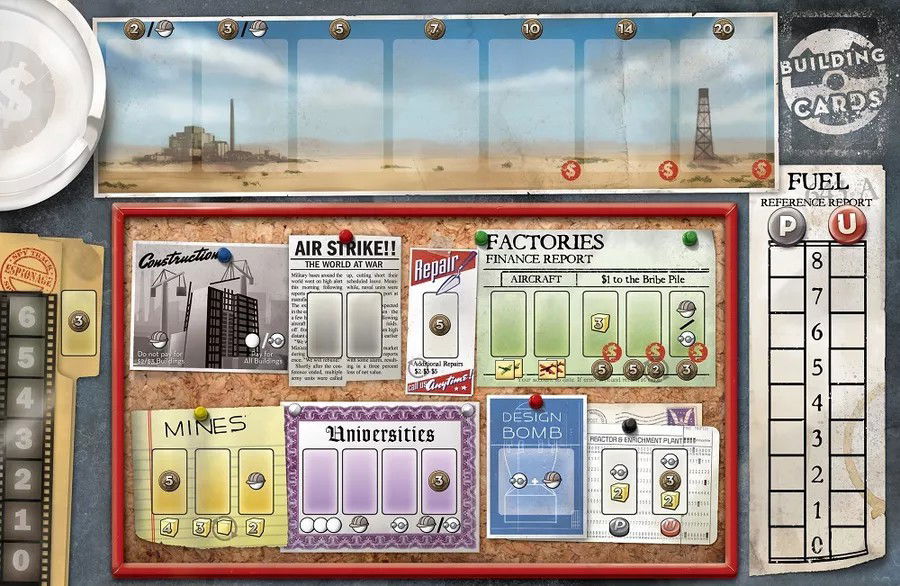
Playing The Manhattan Project is really simple considering the mechanics, but it is highly challenging when we consider its strategies. Basically, you'll be placing or retrieving workers. Obviously, there are free actions, but they tend to be quite simple.
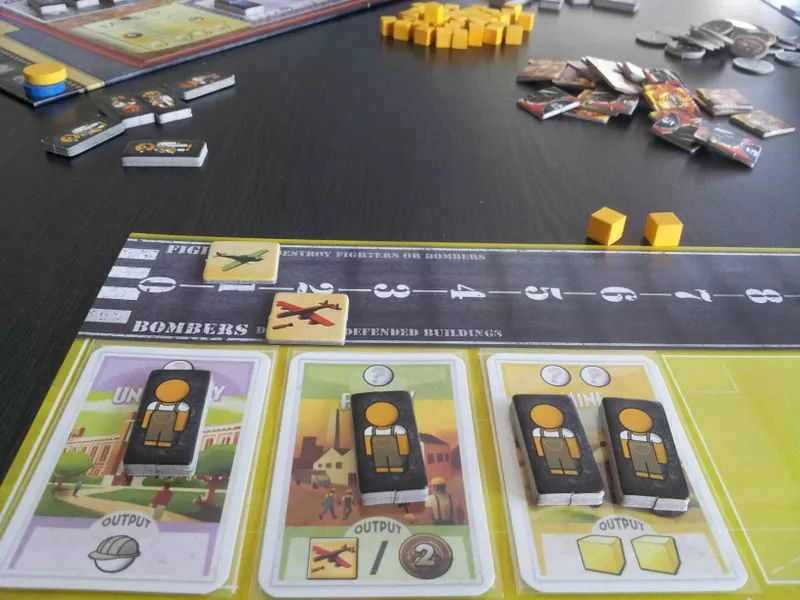
The cool thing is that the Main Board shows each action quite clearly: a quick glance is enough for you to realize what you must do and what you'll get in return when you place down a worker. Basically, you'll be mining yellowcake to produce uranium and plutonium, the bomb's main cores. However, on the main board the production is small and at times expensive, as it requires money or specific workers.
The Manhattan Project is assertive when it comes to worker types for each role. We have laborers, scientists and engineers.
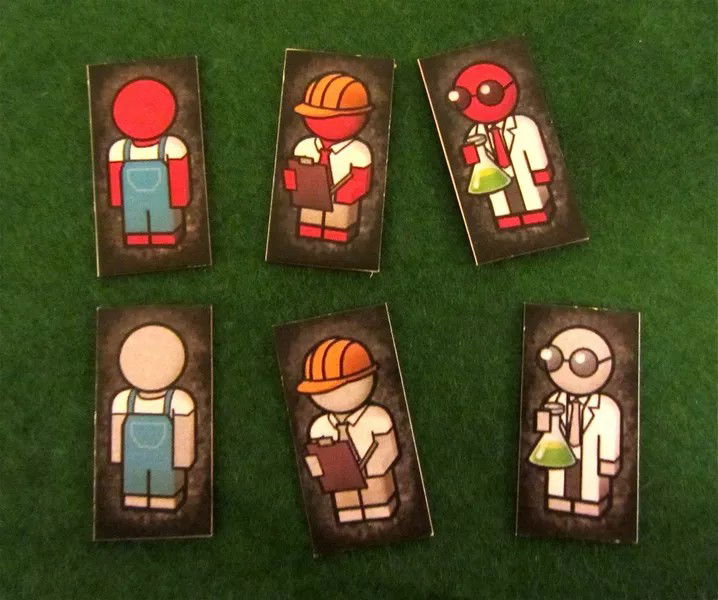
The laborer is the famous "construction worker". As for the scientist and engineer, they're required in some specific spots, and the game gets them right too.
Let's see: for mining and constructing, the engineer is required. In the reactors and when enriching uranium, scientists are indispensable (by the way, there isn't a bomb that doesn't require a scientist to build, but engineers only help in a few ones). Notice how each worker role is balanced: this is all very cool.
The board requirements are clear when it comes to which type of worker you need for each action, and the fact it is all well-represented in the artwork really helps and makes this game independent of its language, as mentioned before.
But not everything is this great: depending on the number of players, you'll only start with laborers or just 1 engineer or 1 scientist. What, then? Simple, send these folks, the laborers, to college! The funny thing is that they can come out graduated as engineers or scientists, or just with more friends. That's right! A laborer can hang around a college and only bring in more friends, which means, other laborers. It's the end of the world! That can happen at one of the three public colleges; at the private ones, your laborers will come out as an engineer or scientist guaranteed.
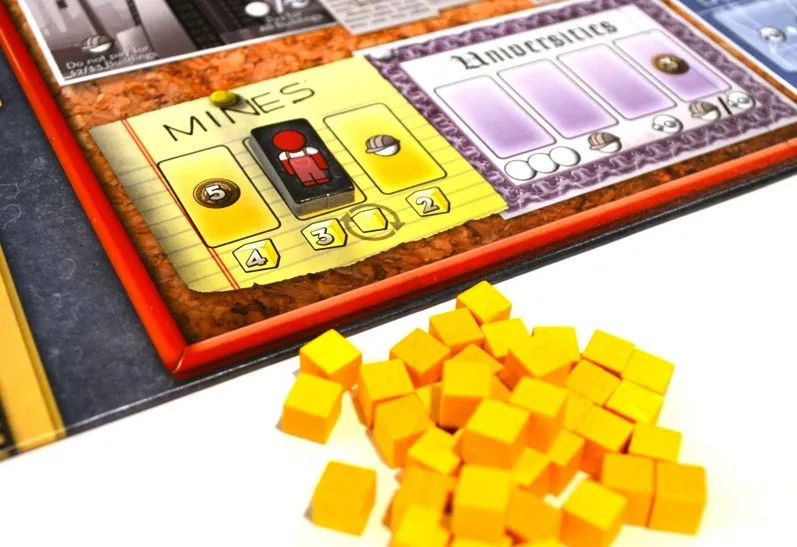
Basically, when you have the right workers and yellowcake, it is time to produce uranium and plutonium. It is also time to choose the bomb design you want to build and go after it, but this action also has its details. When your scientist and your engineer get together to choose a bomb design, your competitors can also choose a bomb design thanks to your action. So, do that at the right time.
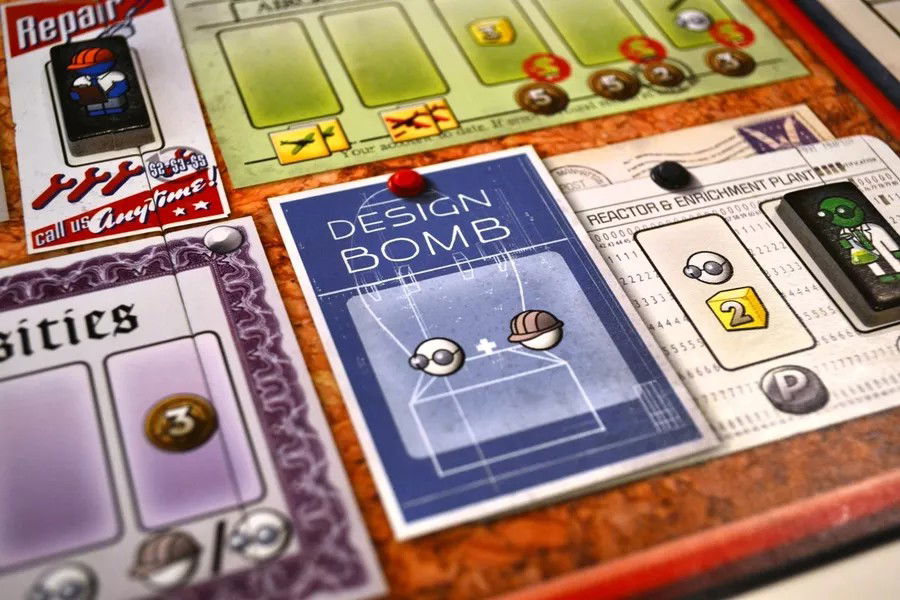
Obviously, in this game, money also makes a difference. You'll use money to mine, study at a private college, repair damages done to your constructions, at the uranium enrichment plant, to carry bombs in bombers and to spy. Money leads the business!
In The Manhattan Project, it is possible to solve everything by playing actions on the main board, but these actions won't give you as much as you'll gain from building things with the same purpose on your individual board. That is highly strategic, as in your turn you can place only 1 worker on the main board whereas you can place down how many workers you want to on your individual board.
Like so, if you only use the main board, you'll do very little in your turn - just one thing, to be exact.
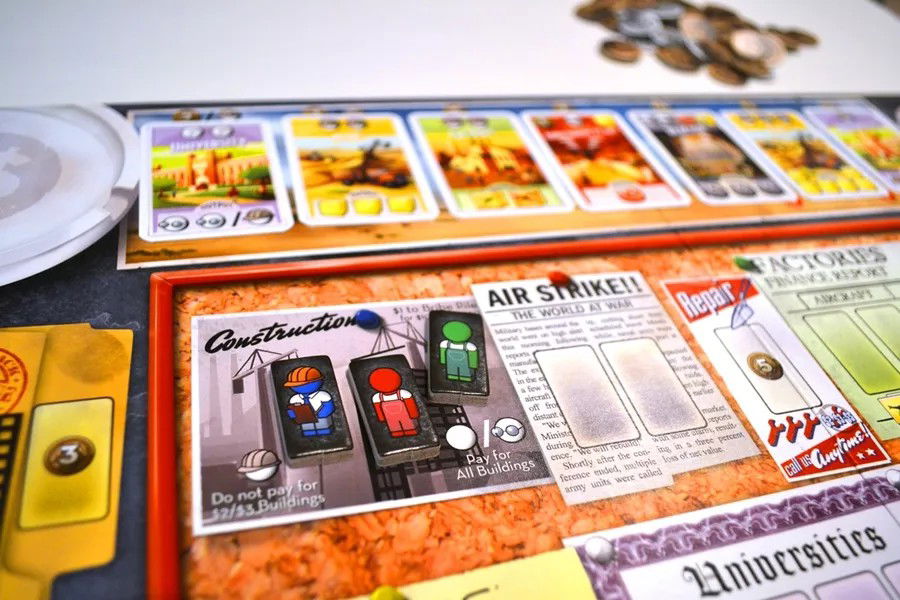
To solve that, all you need to do is build. The engineers are essential for this step, as they can do some building for free. Available constructions significantly boost the number of available actions on the board, which means, they allow you to mine more, graduate more workers, give you more money, create more uranium and plutonium, and so on and so forth. Keep an eye on that!

Obviously, when you're doing great on your individual board, taking care of your air space is vital. Investing in fighters, to protect yourself from attacks, and in bombers, to attack your opponents whenever necessary, is very important. Focus on growing (your individual board) and developing (your defenses in your air spaces).
Finally, you can and probably will be attacked. What to do after that? There is one space for construction repairs - paid, obviously.
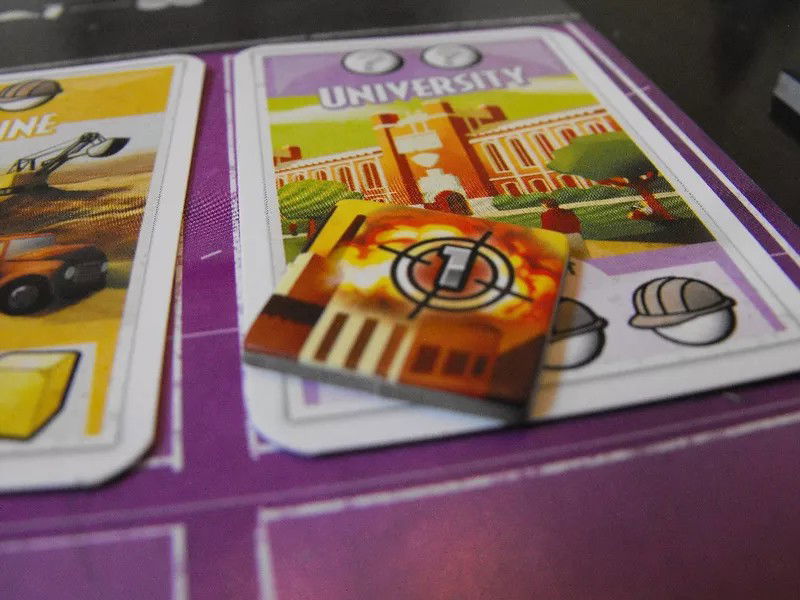
Another factor that happens when you grow is that your opponents can (and will) spy on you and plant their workers on your construction spaces. And the worst thing? There is nothing you can do about that, besides keeping your construction spaces busy with your own workers, which means, there won't be any spaces left for any spies. I love this feature in this game. It makes everything tense, in a good way.
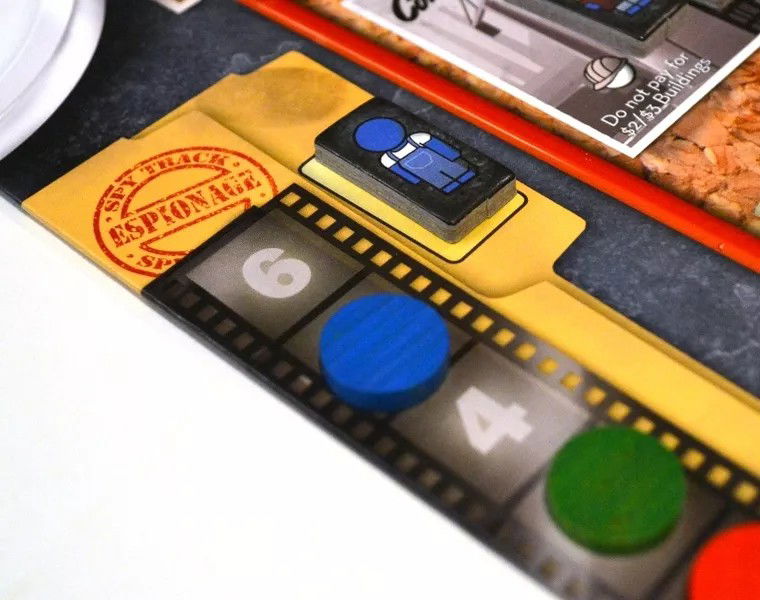
When you no longer have any workers to place, just recall your workers. This action will make you feel like you've lost a turn, but it is part of the game. Use it at the right time. It is at this time that everyone will return so they can be at your disposal, and even the workers who were spying on other players' constructions return as well. They'll thank you when you recall them from their constructions.
About what the free actions are, they refer to actually building bombs, using the materials, uranium or plutonium, depending on the bomb, and the specific workers; that's how you build a bomb. Bombs, besides being built, which will award you points to win the game, can give you even more points, so let's understand how.
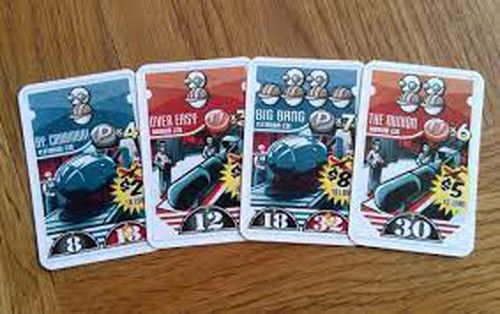
Plutonium bombs are different: they are more complex than uranium ones, and, as a result, need to be tested. How to do that? You'll have to do an implosion test.
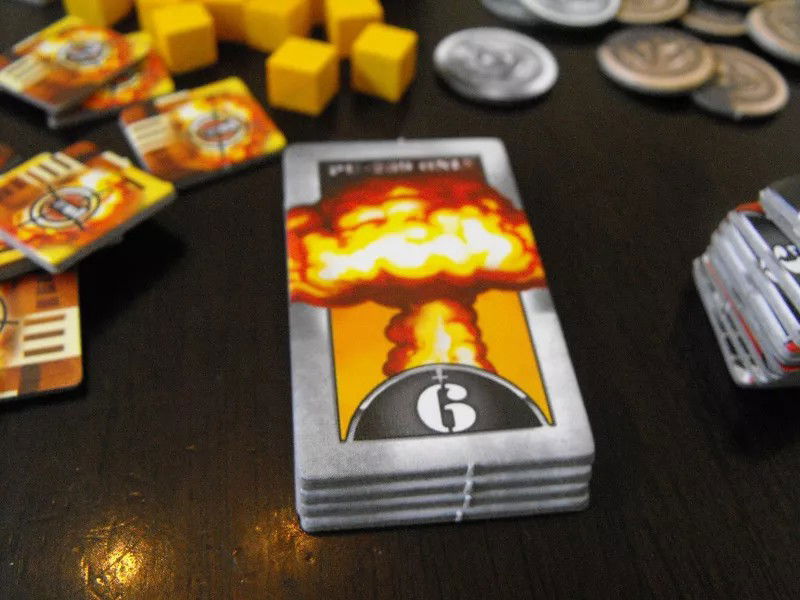
Basically, you'll have to waste one of the plutonium bombs you build, which means, losing your points, but, in exchange, you'll win points from implosion tests and, from then on, you'll guarantee that your plutonium bombs are efficient, and they'll give you more points. That is written clearly on the plutonium bomb card - they have 2 types of points, before and after the implosion test.
You can even carry the bombs you built on bombers and that will also give you more points.

Basically, that is a turn in The Manhattan Project.
End of the Match and Points
The game ends immediately when one of the players hits a number of points that varies according to the number of players, but, at least, 2 bombs must have been built. It is impossible to win without at least 2 bombs built.
To hit the necessary points, also add your implosion test points and bombs attached to bombers.
Strategic Tips
The Manhattan Project has so many spaces to work with (and that is good) that you practically have a strategy for each space on the Main Board. Let's go!
The first thing to keep an eye on, as I mentioned before, is knowing which worker to use at each moment in the match. Early on, I'll recommend playing an engineer, so you can graduate other engineers at the college to mine and build your own buildings.
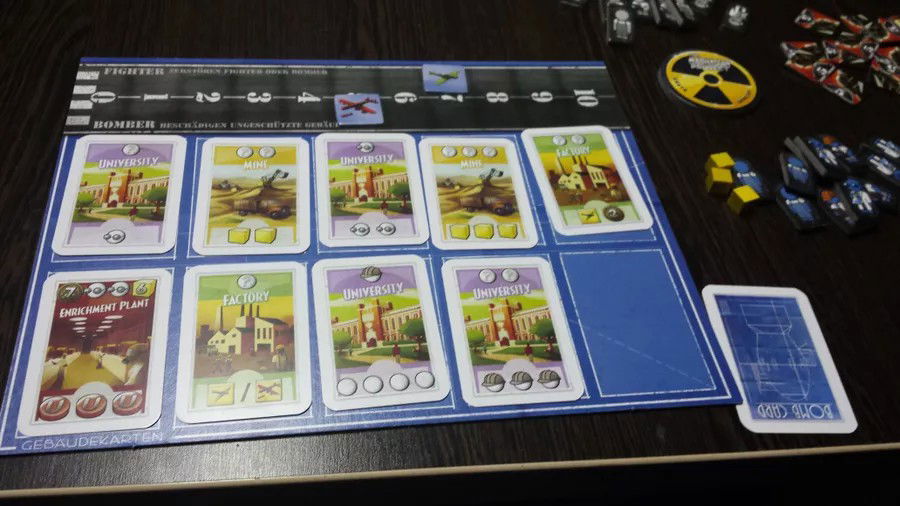
Scientists are always necessary in reactors, enriching uranium, and are indispensable when building bombs. I'd graduate them next, but always keep an eye on the board because, if the game is moving forward quickly, we can speed up the bomb production with scientists alone, so that is very important.
Be careful: on your turn, you can only place 1 worker on the Main Board, and the others can be played on your Individual Board, building bombs or as spies. I say that, because, if you don't have builds of your own, you'll have idle workers in your turn and that is terrible. So build!
When you start "spinning your machine", it is time to focus on defending your air space, and investing more in fighters and bombers becomes essential. Fighters defend us against enemy attacks; bombers, besides serving as counter-attacks, are used to carry bombs, which will give you more points to finish the game.
When you build your first plutonium bomb, if you choose to build that bomb, build one that costs less, so you can already do an implosion test on it and not lose as many points when you test this bomb. The time to do this implosion test has other consequences. Tests will give more points to whoever does them first, which means, by doing them before everyone else, you'll gain more points.

Attacking your opponents shouldn't always be your main strategy. I say this, because this takes time and will incite retaliation. Only use this strategy if you notice your opponent is really efficient with their builds and is really prepared to build a bomb soon, but, in general, I don't recommend you focus on this. Just try to defend yourself, because that is good regardless of the situation!
Money, which means, getting money, is always useful, as everything costs something in this game. There are actions that don't cost a thing, and others that can be used with the right workers, and therefore become free, but when these spaces are being used, it's up to us to pay for them. That happens when you're mining, at college, when you repair your constructions, when you enrich uranium, carry bombs and spy on others. Always have a good amount of money saved, because it goes away quickly: when you least expect it, it's gone!
The best strategy for your uranium and plutonium reserves really is hoarding it. Remember you have a limit, but I suggest you hoard it and build your bombs all at once. I learned this strategy in the worst way possible; I was surprised by an opponent when I was having trouble and was building my bombs slowly and gradually. I got punished! Hoard materials and build everything all at once.
Speaking of building bombs, you must choose the bomb you'll build, and that is also highly strategic. In the game, there are always a number of bombs available equal to each player + 1, which means, when you decide which bomb to build, you get all the cards, choose one, hand out the rest of the cards to the player on your left, and that goes on until there is one card left, which will go back to you. You'll get these two cards, which means, choose your first bomb well, because then you'll know which bomb your opponents choose and there will be one bonus bomb, to your taste or not, for you to build.
I say that is strategic, because you can monitor what your opponents are hoarding (plutonium or uranium) and decide to disrupt them and keep the bomb that requires the material they have most of, because this way you'll delay their game plan. That is catching your opponents off guard!
The Manhattan Project makes you keep an eye on the game the whole time, on your Main Board and Individual Board. Reading all of this well will make you win the game.
Unboxing and Rules Video
Check out below The Manhattan Project Unboxing video.
Get familiar with the rules in detail with the video below:
Pedagogic Tips
The Manhattan Project, as it is a game that simulates historical facts, even though tragic or politically incorrect, has a lot to teach us about technology, history and planning.
About technology; it shows the complete and organized cycle, in its logical order, of what it takes to build a bomb and the materials you need to use.
History - this is where the game shines pedagogically. It depicts, truthfully, the whole Manhattan Project cycle in detail: the manpower necessary, how it all happened, the necessary installments for the production, and how it all went down. Unfortunately, there are parts of our history that we wish never happened. But when they do happen, we can't just pretend they didn't happen, and instead, we must learn from our mistakes to make sure we won't repeat them.
Regarding planning, I'll highlight the sequential order and actions that you must do logically to build something. In this game's case, it was bombs. Without planning and long-term thinking, you can't have success, not even in this game or in real life.
Enjoy what The Manhattan Project has to offer you pedagogically and have fun!
I strongly recommend The Manhattan Project for your collection!!!

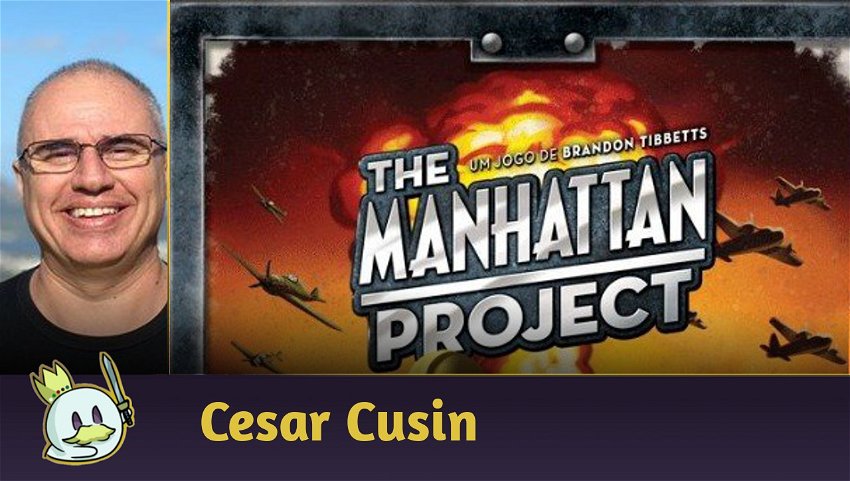








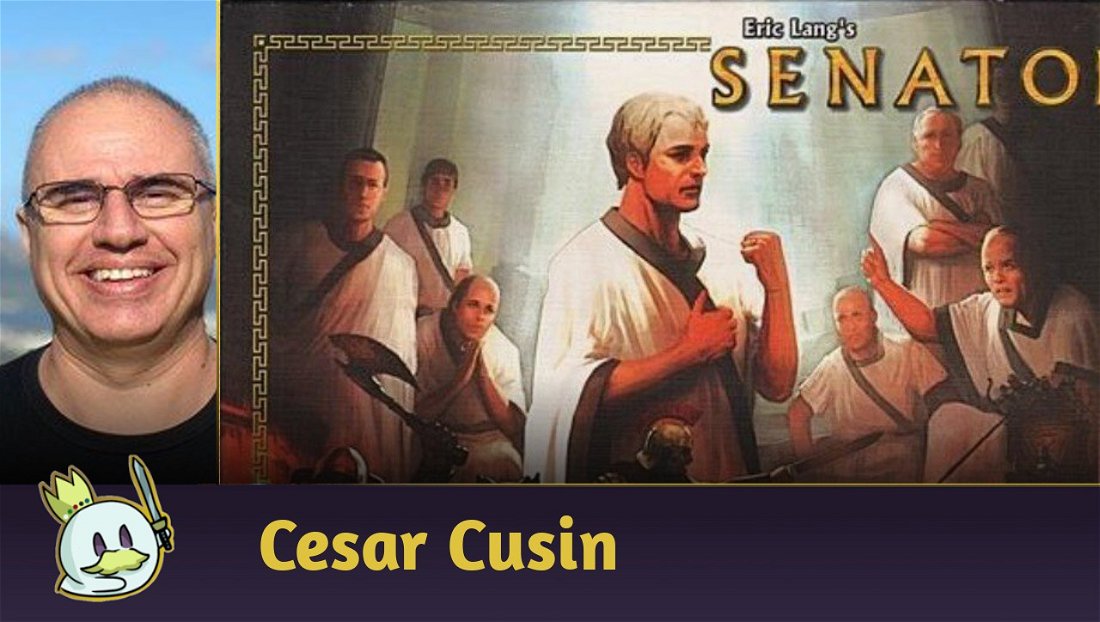



— 评论 0
, 反应 1
成为第一个发表评论的人